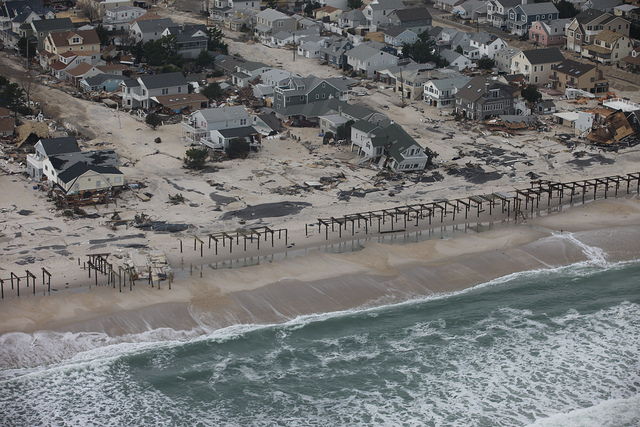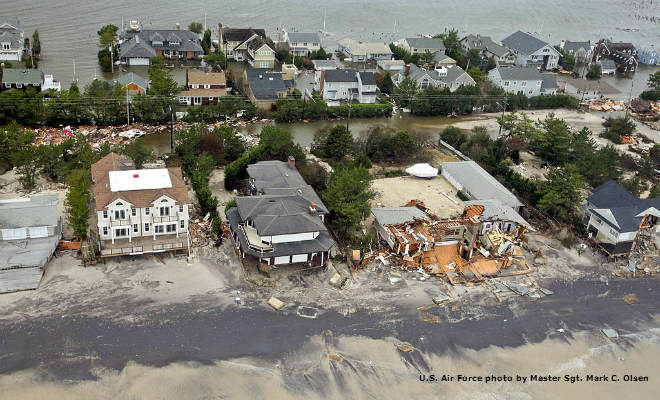New Jersey Future Blog
Planning for Sea-Level Rise VI: Tax Districts
February 17th, 2017 by New Jersey Future staff
This series of articles was written by New Jersey Future intern Connor Montferrat.
 This is the sixth of a series of posts that will examine strategies being used in states throughout the country to reshape development patterns in response to risks posed by rising sea levels and a changing climate. The objective of the series is to present practical and tested adaptation and mitigation approaches that New Jersey communities might use to help respond to the growing threat presented by our subsiding and eroding coastlines, increasingly frequent and severe storms, and mounting flood risks.
This is the sixth of a series of posts that will examine strategies being used in states throughout the country to reshape development patterns in response to risks posed by rising sea levels and a changing climate. The objective of the series is to present practical and tested adaptation and mitigation approaches that New Jersey communities might use to help respond to the growing threat presented by our subsiding and eroding coastlines, increasingly frequent and severe storms, and mounting flood risks.
This article considers the use of special tax districts to fund risk-related services.
A special tax district is a designated area where a majority of property owners agrees to allow the government to levy an additional property tax in exchange for a specific service. A business or special improvement district is an example of a mechanism business and property owners commonly use to organize and raise funds to enhance or expand municipal services exclusively within the area from which the revenues are obtained. Special tax districts can accomplish a wide variety of objectives, including such resiliency enhancement measures as marsh restoration or beach nourishment.
Examples in Current Use
New Jersey has established special districts to fund public services such as police, fire, solid waste, and natural resources protection. The Pinelands Commission, the Highlands Council, the New Jersey Sports and Exposition Authority, and the Port Authority of New York and New Jersey are government authorities that administer some of these districts. To encourage more resilient development patterns and to acknowledge the increasing costs of providing services to flood-prone areas, special flood hazard districts could be created to tax residents who continue to live in those high-risk areas. The tax levy could be based on the incremental difference in the costs for ongoing repairs and provision of roads, stormwater management, storm cleanup, sewer, water, gas, electric, and bulkheads in areas that experience regular flood damage.
- In Arizona, flood control districts are designated as special taxing districts with authority to levy a secondary property tax on parcels within their jurisdiction. The Pima County Regional Flood Control District‘s levy is set at 30 cents per $100 assessed valuation. At this rate, a typical property with an assessed valuation of $152,511 would expect to pay an annual flood control tax of approximately $45. The county uses the tax revenues in conjunction with state and federal funding to build flood control facilities and to acquire flood-prone land.
- In 2016, California voters within the nine-county jurisdiction of the San Francisco Bay Restoration Authority approved a $12 tax on all parcel owners, with proceeds going to shoreline protection from coastal flooding and marsh restoration. The taxes levied in the county districts support many functions, including collecting rainfall data or maintenance of regional storm drainage facilities within the Flood Control Zones located within the district. In another California example, the Riverside County Flood Control and Water Conservation District, a regional flood management authority, keeps residents safe from flood hazards but also collects an independent tax revenue stream of $43 million for funding capital improvements. In a third example, revenues to run the American River Flood Control District‘s operations are raised through a special assessment on properties in the district that benefit from the flood protection it provides. The district is part of the regional Sacramento Area Flood Control Agency. The assessment appears on the annual Sacramento County property tax bill as a direct levy and is designated American River Flood Zone A, Zone B, or Zone C.
- In Florida, the Flagler County Commission recently enacted two new taxing districts to pay for the cost to address long-running drainage issues. Each property owner in the Malacompra Basin will pay a $75 annual fee, and each property owner in Marineland Acres will be charged up to $600 a year.
- In Texas, Harris County’s Flood Control District was created in 1937. The district’s income is derived primarily from a dedicated ad valorem property tax. The rate varies based on funding needs, and is currently set at 3.3 cents per $100 valuation. The statutory limit for the district’s tax rate is 30 cents per $100 valuation. After the Tax Day Flood of April 2016, the district allocated more than $5 million for buyouts of certain flooded structures. Since the inception of the district’s voluntary buyout program in 1985, more than 2,900 flood-prone properties have been purchased with Flood Control District funds, U.S. Army Corps of Engineers funds and FEMA grant funds.
Levying additional taxes will undoubtedly be controversial. However, ongoing costs associated with post-storm cleanup, flood-proofing municipal infrastructure, elevating roadways and providing emergency services will increase as flooding associated with sea-level rise and the effects of severe storms occur more often. These increasing costs will place an escalating burden on already stressed municipal budgets and the list of realistic alternative funding options is likely to grow extremely short.
















